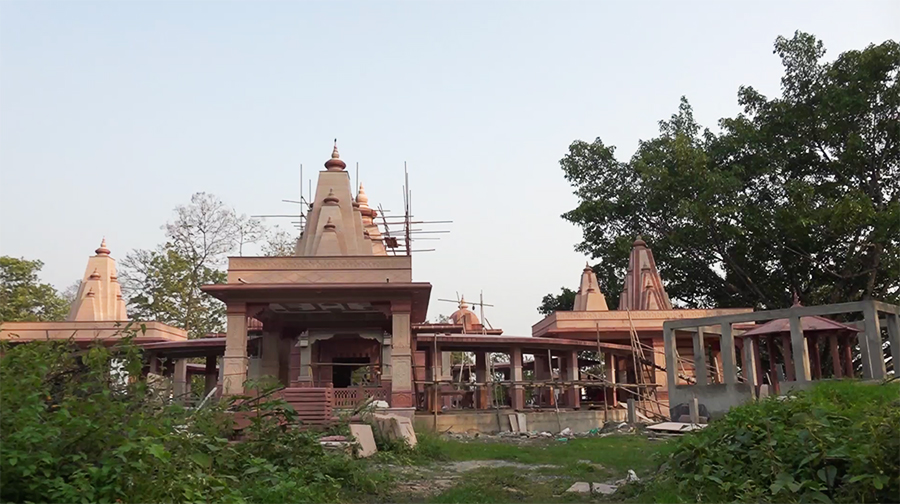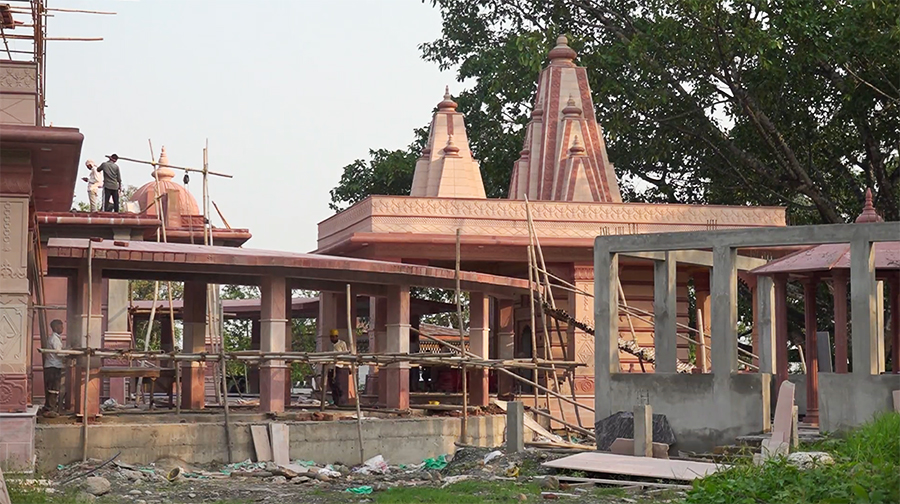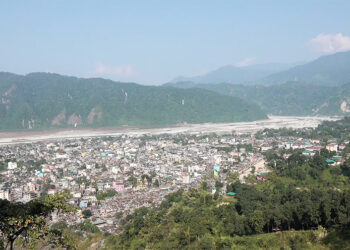 In Samdrup Jongkhar, a sacred site in Jomotshangkha Dungkhag is getting a grand new look. The construction of the new Bhairab Kunda Shiva Temple, believed to be located where a part of the first wife of Lord Shiva, Goddess Sati’s body, lies, is now nearing completion. Over 90 per cent of the work has been completed.
In Samdrup Jongkhar, a sacred site in Jomotshangkha Dungkhag is getting a grand new look. The construction of the new Bhairab Kunda Shiva Temple, believed to be located where a part of the first wife of Lord Shiva, Goddess Sati’s body, lies, is now nearing completion. Over 90 per cent of the work has been completed.
It is believed that Sati sacrificed herself in a fire during a ritual after her father insulted her husband, Lord Shiva.
Heartbroken, Lord Shiva carried her body across the universe. Wherever parts of her body fell, those places became holy sites.
One such sacred site is where the present Shiva temple is been constructed.
“After Sati’s body parts fell here, our forefathers began offering prayers and worshipping at this site for generations. We have continued this tradition, and everyone here considers it a sacred place,” said Krishna Chandra Nepal, a resident of Langchenphu Gewog.
 The old temple was too small for worship and gatherings, so a new temple is being built at the same site. Locals say the temple is not just a religious structure, but also a symbol of peace, unity, and cultural identity.
The old temple was too small for worship and gatherings, so a new temple is being built at the same site. Locals say the temple is not just a religious structure, but also a symbol of peace, unity, and cultural identity.
Once complete, it is expected to become a spiritual destination for pilgrims from across the region.
“There are many Hindus in India, and building a temple like this here will help strengthen our friendship with India,” said Yoba Krishna Powdyel, a resident of Langchenphu Gewog.
“There was a small temple here even before our settlement. Besides, Bhutanese, people from all over India come here. Some Indian visitors even say that children who could not speak have miraculously spoken after visiting here,” said Chitra Khar Thapa, another resident.
“Currently, the town is not well developed, but with the construction of this temple, people across India will visit, which will help promote tourism and development in the area,” said Chandra Bahadur Chuwan, also a resident.
“Now that the temple has been upgraded, we are very happy. It is not just people of Langchenphu, people across the country are pleased to have this temple,” said Jai Narayan Dhal, a resident of Langchenphu Gewog.
 The construction, which began in 2023, is expected to be complete by this August. The temple is built mostly with marble. It showcases unique and traditional designs.
The construction, which began in 2023, is expected to be complete by this August. The temple is built mostly with marble. It showcases unique and traditional designs.
As the temple nears completion, it not only reflects deep spiritual devotion, but is also expected to open new doors for cultural exchange and economic growth.
Kinley Wangchuk, Samdrup Jongkhar
Edited by Tandin Phuntsho








